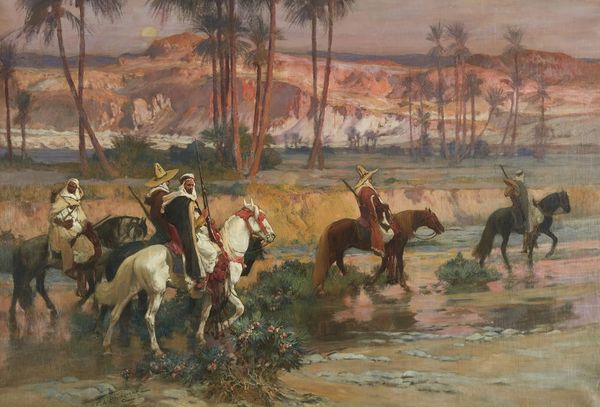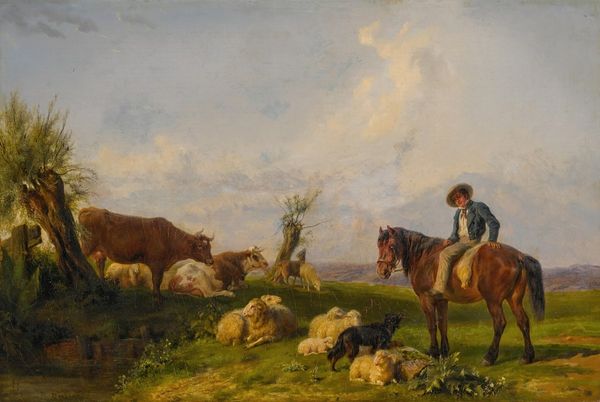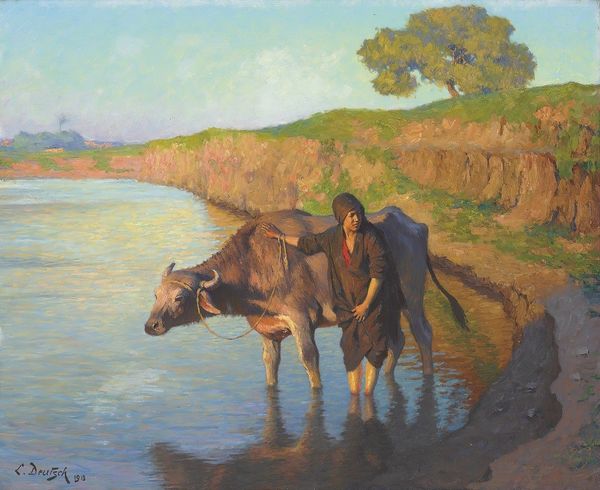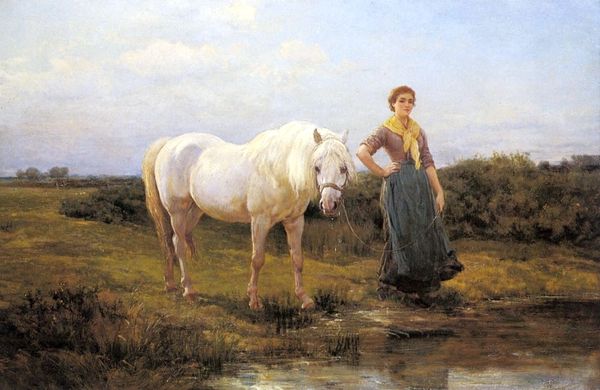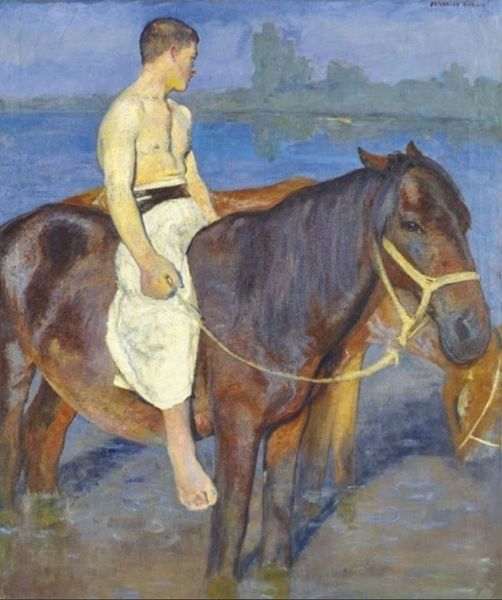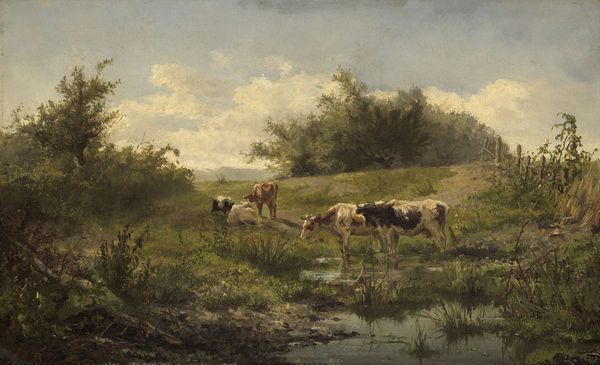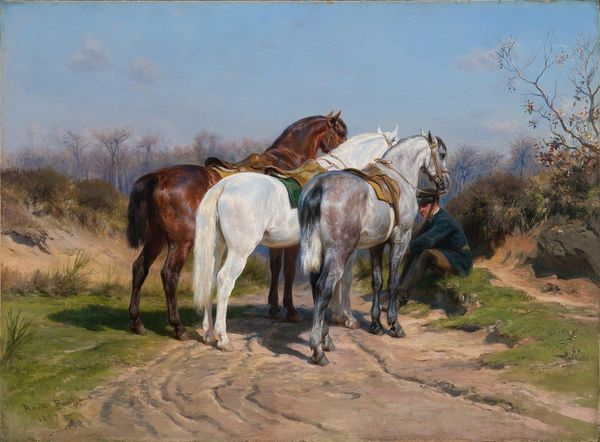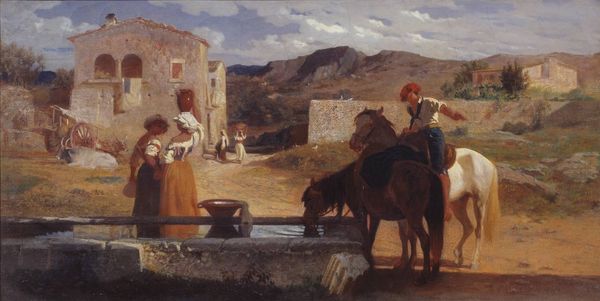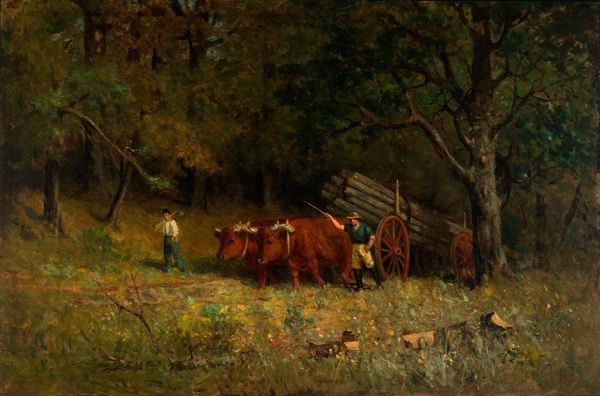
painting, oil-paint
#
portrait
#
figurative
#
narrative-art
#
painting
#
oil-paint
#
landscape
#
impressionist landscape
#
oil painting
#
orientalism
#
genre-painting
#
academic-art
#
realism
Copyright: Public Domain: Artvee
Curator: Frederick Arthur Bridgman's "Watering the Horses," painted in 1921 using oil on canvas, offers us a glimpse into a narrative scene set against an orientalist landscape. Editor: It’s strikingly serene at first glance. The palette is warm and inviting, with a certain diffused quality to the light. The composition draws you in, the curve of the river guides the eye. Curator: Indeed. Bridgman was well-known for his depictions of North Africa. He meticulously staged scenes that appealed to a Western audience’s imagination of the region, contributing to the broader Orientalist movement in art. This particular painting blends realism with an idealized vision. Editor: But that idealized vision is precisely what needs interrogation. The 'serenity' we initially perceive masks a complex history of colonial power dynamics and cultural misrepresentation. How do we, as viewers today, engage with the aesthetics of this painting while acknowledging the problematic context from which it emerges? Curator: It’s a valid point. We must understand that the depiction of the “Orient” often reinforced existing stereotypes and justified colonial endeavors. However, the artwork also documents aspects of everyday life from that era, albeit through a biased lens. Editor: I see how it provides that visual documentation, but it’s crucial to deconstruct how the imagery served imperial narratives. Consider how the local figure and even the animals are subtly positioned within the painting—who controls the narrative, and to what end? Curator: Certainly, and in terms of artistic choices, his style blends Academic art principles with elements of Impressionism. You see the academic dedication to detail alongside a lighter touch in rendering the landscape, softening the details. Editor: I'd also suggest viewers contemplate how the 'genre painting' aspects, meant to simply depict everyday life, might actually further exoticize the setting and the individuals within it. How can we foster a space to examine these depictions critically and responsibly? Curator: By engaging in informed discussions, acknowledging the complex historical backdrop, and challenging romanticized or stereotypical interpretations, we can promote thoughtful understanding, and more accurately understand the artwork and the era in which it was produced. Editor: Exactly. It forces us to question the relationship between art, representation, and the enduring legacy of colonial ideologies, moving toward a space of accountable and critically informed viewing.
Comments
No comments
Be the first to comment and join the conversation on the ultimate creative platform.

